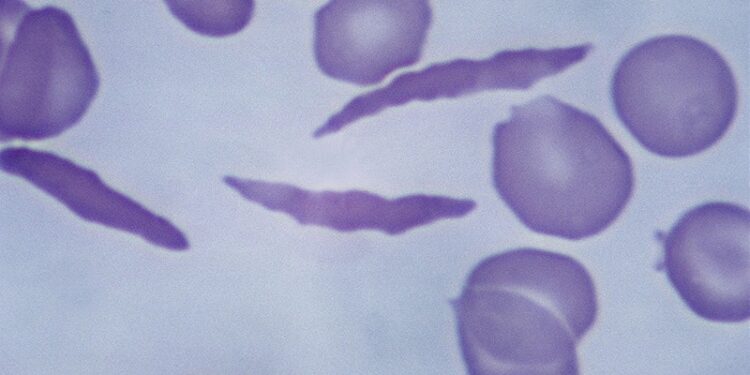TOPLINE:
Scientists at Johns Hopkins Medicine, Baltimore, have identified a potential new gene target, FLT1, that could be edited to treat sickle cell disease, an inherited blood disorder marked by sickle-shaped red blood cells causing intense pain and shortened lifespans. The discovery has expanded the knowledge of genes associated with fetal hemoglobin production in sickle cell disease patients of African ancestry from 20% to 90%.
METHODOLOGY:
- Researchers conducted a genome-wide association study analyzing gene sequencing data to identify and connect variations in specific genes with certain traits or conditions.
- Analysis included genetic data from 3751 people with sickle cell disease, focusing on genes regulating hemoglobin production.
- Scientists mapped genes regulating fetal hemoglobin levels in Black populations across Cameroon, Tanzania, and the United States.
- Investigators utilized genotyping tools to identify 14 novel locations of genes on various regions of the genome.
TAKEAWAY:
- Researchers identified 14 novel gene locations on various regions of the genome through genotyping analysis.
- The FLT1 gene, located on chromosome 13, demonstrated the strongest signal of gene expression, indicating its crucial role in fetal hemoglobin production.
- Prior to this research, scientists knew only 10%-20% of gene locations influencing fetal hemoglobin production in African or African-descended individuals, compared with nearly 50% in European-descended individuals.
- The new genetic markers have increased knowledge to 90% of genes associated with fetal hemoglobin production in sickle cell disease patients of African ancestry.
IN PRACTICE:
“Finding new genetic variants that could be edited to treat more patients, which would preserve the type of hemoglobin present at birth, is critical for saving more lives,” wrote the authors of the study.
SOURCE:
The study was led by Ambroise Wonkam, MD, PhD, Henry J. Knott Director of the McKusick-Nathans Institute and professor in the Department of Genetic Medicine at the Johns Hopkins University School of Medicine. It was published online on March 1 in Nature Communications.
LIMITATIONS:
Prior to this research, only 10%-20% of gene locations involved in fetal hemoglobin production were known in African or African-descended individuals, compared with nearly 50% of the variation in genes regulating fetal hemoglobin in European-descended individuals. The authors noted that with the new genetic markers described in this study, they now know 90% of the genes associated with the production of fetal hemoglobin in sickle cell disease patients of African ancestry.
DISCLOSURES:
The study received funding support from the National Institutes of Health (1001HG007459-01, U24-HL-135600), the National Cancer Institute (P30 CA021765), the Child Care Foundation, and the American Lebanese Syrian Associated Charities, which is a nonprofit organization that raises funds for St. Jude Children’s Research Hospital.
This article was created using several editorial tools, including AI, as part of the process. Human editors reviewed this content before publication.
Source link : https://www.medscape.com/viewarticle/flt1-gene-next-breakthrough-sickle-cell-therapy-2025a100076c?src=rss
Author :
Publish date : 2025-03-26 04:52:00
Copyright for syndicated content belongs to the linked Source.














